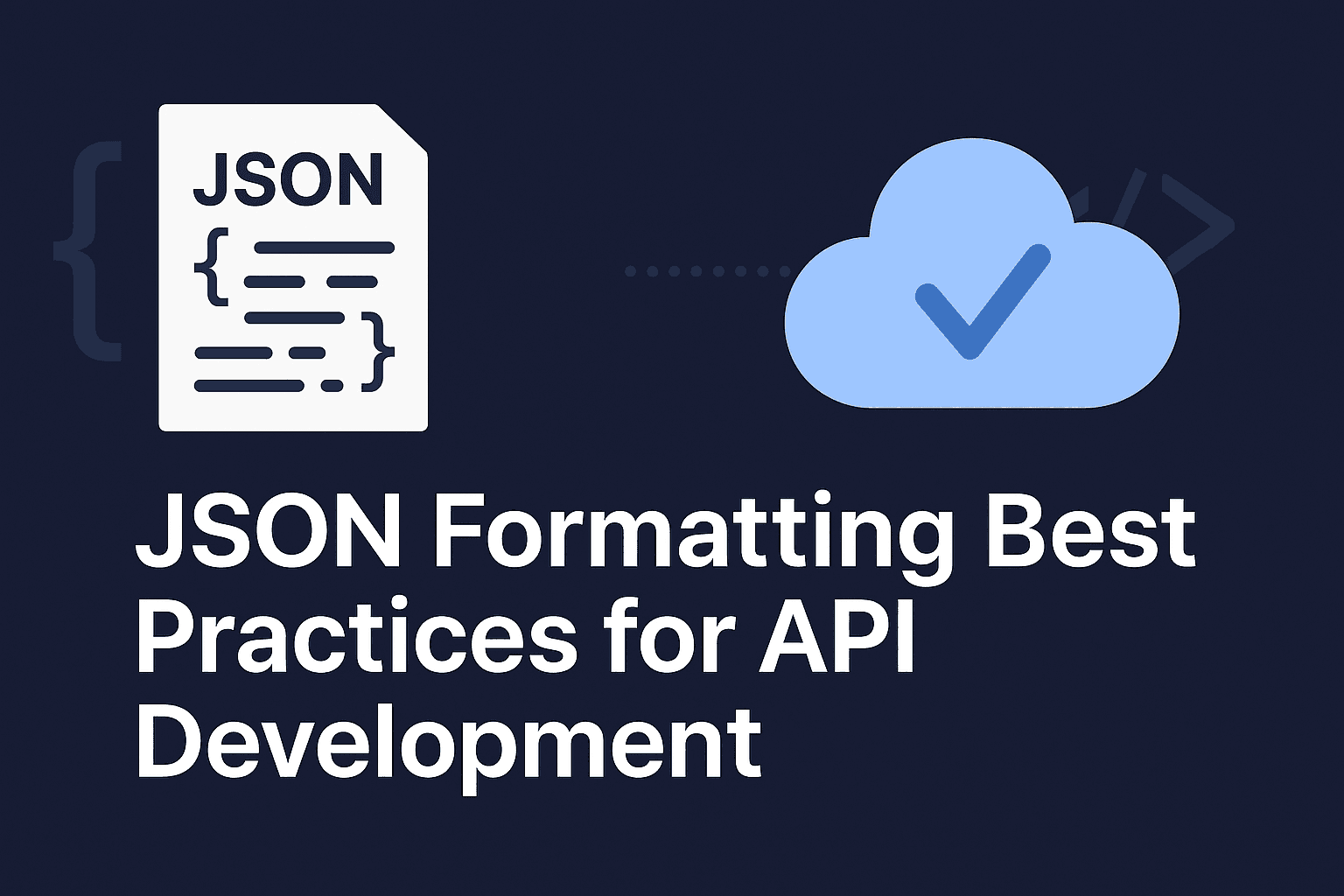JSON Formatting Best Practices for API Development
JSON (JavaScript Object Notation) has become the de facto standard for data exchange in modern APIs due to its simplicity, human readability, and compatibility across programming languages. However, inconsistent formatting or poor design can lead to maintainability issues, increased payload sizes, and parsing errors.
1. Consistent Key Naming Conventions
- Use lowercase with underscores (snake_case) or lowercase with hyphens (kebab-case) for consistency.
- Avoid mixing styles within the same API.
- Be descriptive but concise.
Example:
{
"user_id": 123,
"first_name": "John",
"last_name": "Doe"
}
2. Maintain a Predictable Structure
Ensure that your JSON responses always follow a consistent schema to make parsing predictable.
Good Example:
{
"status": "success",
"data": {
"id": 1,
"name": "Product Name"
}
}
Bad Example: (Changing structure based on conditions)
{
"id": 1,
"name": "Product Name"
}
3. Avoid Deep Nesting
Deeply nested JSON can make data harder to access and increase parsing time.
Instead of:
{
"user": {
"profile": {
"address": {
"city": "New York"
}
}
}
}
Flatten when possible:
{
"user_city": "New York"
}
4. Use Consistent Data Types
- Don’t switch between strings and numbers for the same field.
- Use booleans for true/false values.
- Use ISO 8601 format for dates:
YYYY-MM-DDTHH:MM:SSZ.
Example:
{
"is_active": true,
"created_at": "2025-08-08T10:00:00Z"
}
5. Minimize Payload Size
- Remove unnecessary whitespace in production.
- Exclude null or empty fields unless required.
- Consider compression (gzip/Brotli) for large payloads.
6. Include Metadata for Pagination and Status
Example:
{
"status": "success",
"page": 1,
"total_pages": 10,
"data": [ ... ]
}
7. Provide Error Details in a Standard Format
Example:
{
"status": "error",
"code": 400,
"message": "Invalid request parameters",
"errors": [
{ "field": "email", "error": "Invalid format" }
]
}
8. Document Your JSON Schema
- Maintain an API specification (OpenAPI/Swagger) for clarity.
- Include sample requests/responses in API docs.
- Validate JSON in automated tests.
Conclusion
By following these best practices, you’ll make your API responses predictable, efficient, and easy to consume. Good JSON formatting not only improves developer experience but also reduces integration errors, making your API more reliable and maintainable in the long run.
Pro Tip: Use automated linters and schema validators to enforce JSON formatting rules across your API services.


